He built big. He built small. He built bridges. He built grain elevators and cotton compresses. He built houses. And always he built to last. And he could build to last because he built with concrete.
Born in Milam County in 1884 and raised in Dallas, Charles Moss Davis was a civil engineer and bridge builder who specialized in industrial concrete construction. He was a pioneer in the system of high bridge pier construction using moving forms. He came to Fort Worth in 1907 to serve as chief engineer on a planned interurban line between Fort Worth and Mineral Wells, but the financial panic of 1907 stopped that project. Also in 1907 he urged the city of Fort Worth to build a reservoir on a site he had selected on the Clear Fork of the Trinity River near Benbrook. (But not until 1952 would Benbrook Lake be impounded.) He was a consulting engineer to the city of Fort Worth and a bridge consultant to the State Highway Department. He helped build canals in Nebraska, South Dakota, and Wyoming. He advised railroads and the Corps of Engineers on bridges. He designed and supervised construction of the seawalls for forts Crockett and Travis on Galveston Island. He supervised construction of the Houston Ship Channel in 1908-1911.
And all of this without a day of college.
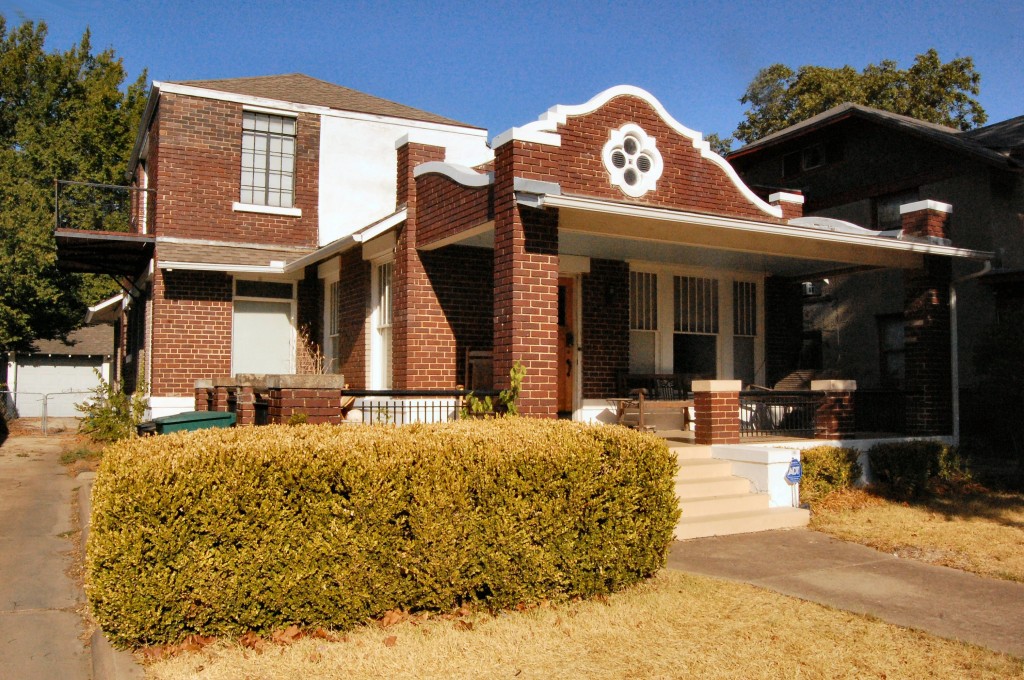
But Davis also built houses. For example, he built this house for himself on College Avenue in South Hemphill Heights in 1914 when he was about thirty. Note the quatrefoil.
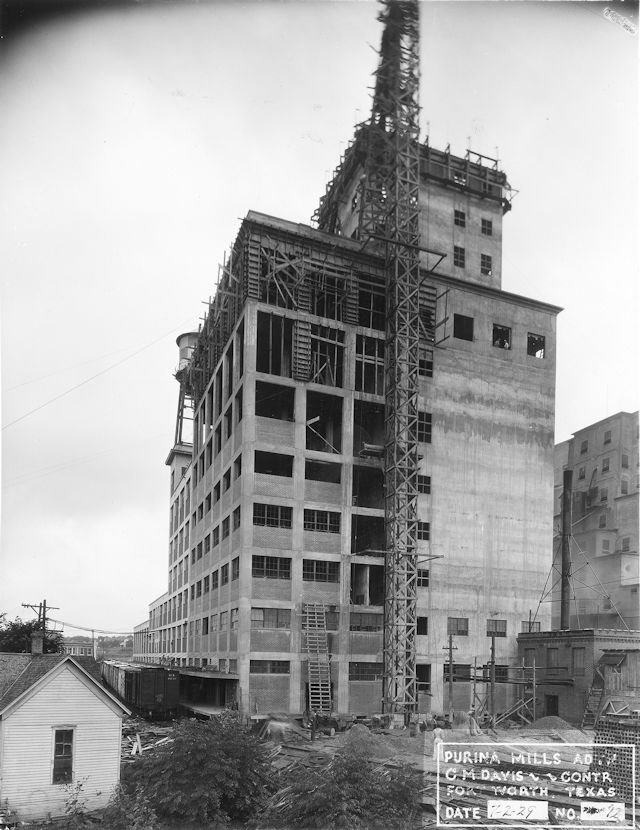 In 1929 Davis built an addition to the Ralston Purina mill east of downtown. (Photo from University of Texas at Arlington Library.)
In 1929 Davis built an addition to the Ralston Purina mill east of downtown. (Photo from University of Texas at Arlington Library.)

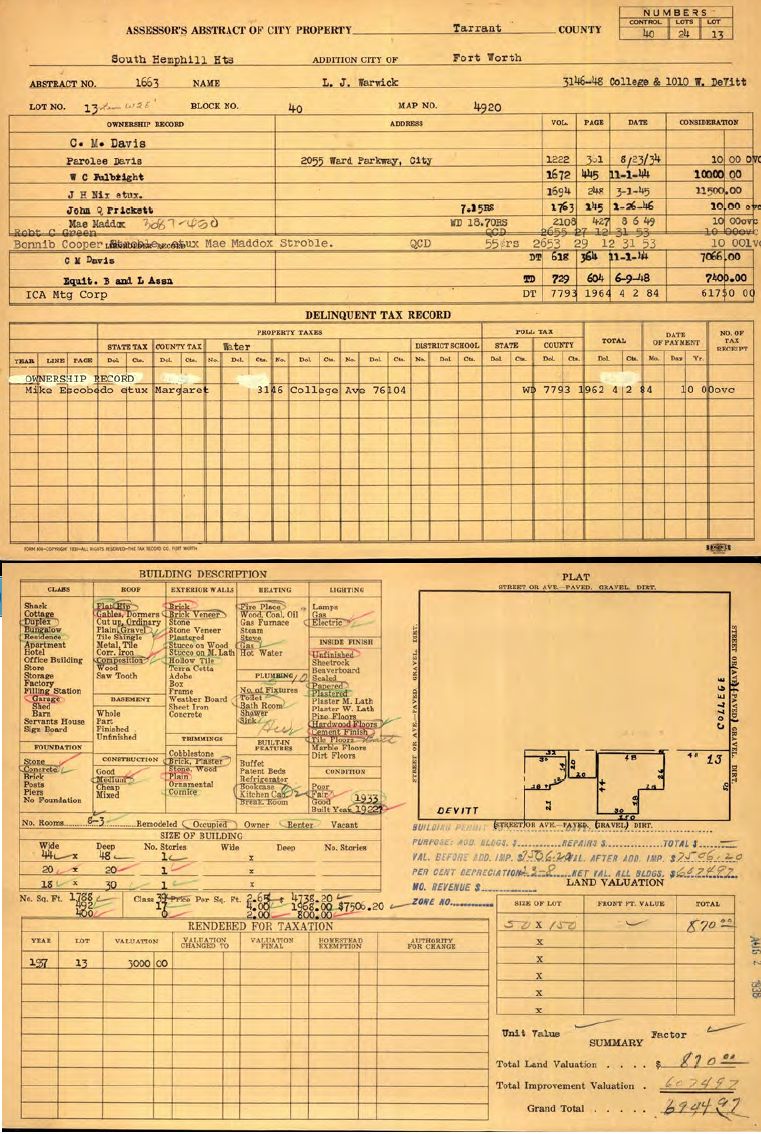 In the 1930s Davis began to think small: He applied his knowledge of industrial concrete construction to “apart-homes,” such as this one at 1010 West Devitt Street (just around the corner from the Davis home) made of concrete block, glass block, and stucco. His daughter, Martha Zoe, was his designer.
In the 1930s Davis began to think small: He applied his knowledge of industrial concrete construction to “apart-homes,” such as this one at 1010 West Devitt Street (just around the corner from the Davis home) made of concrete block, glass block, and stucco. His daughter, Martha Zoe, was his designer.
 Daughter Martha Zoe studied design at Sophie Newcomb College and the Art Students League in New York.
Daughter Martha Zoe studied design at Sophie Newcomb College and the Art Students League in New York.
Father and daughter built their other apart-homes near TCU. Even on this small scale, the Davises’ love of the streamline moderne architecture of the era is evident.
 This ad for Worthcrete in 1935 features a “modernistic efficiency home” designed and built by Davis at a cost of $1,695 ($32,000 today).
This ad for Worthcrete in 1935 features a “modernistic efficiency home” designed and built by Davis at a cost of $1,695 ($32,000 today).
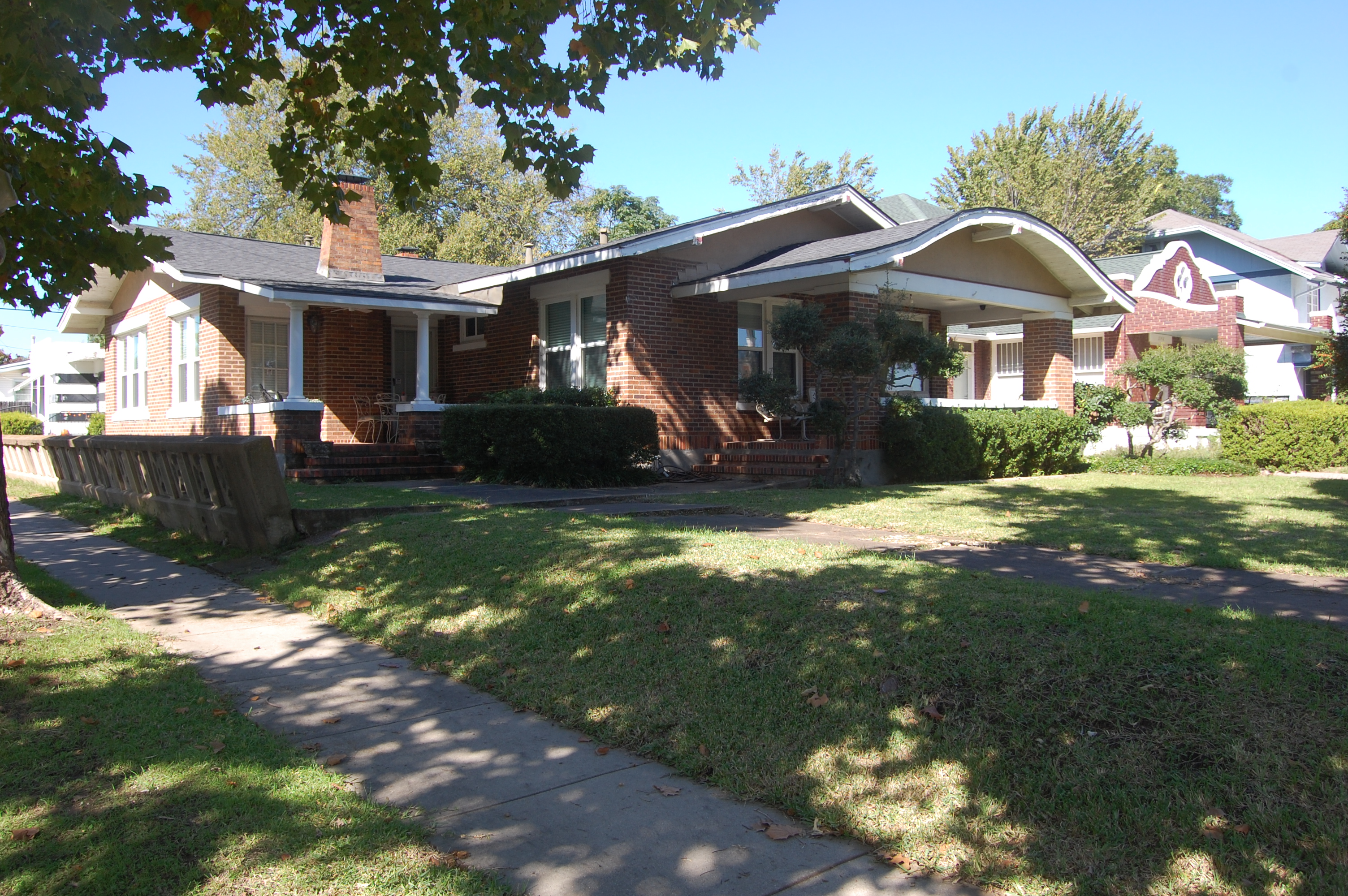 Davis also built the house at 3146 College Avenue (1922) next to his own. The Devitt apart-home technically is on the 3146 College Avenue lot. The Devitt house can be seen on the left, the Davis house on the right.
Davis also built the house at 3146 College Avenue (1922) next to his own. The Devitt apart-home technically is on the 3146 College Avenue lot. The Devitt house can be seen on the left, the Davis house on the right.
 Note the decorative concrete wall along the side of the 3146 College Avenue house-surely the signature of a concrete master.
Note the decorative concrete wall along the side of the 3146 College Avenue house-surely the signature of a concrete master.
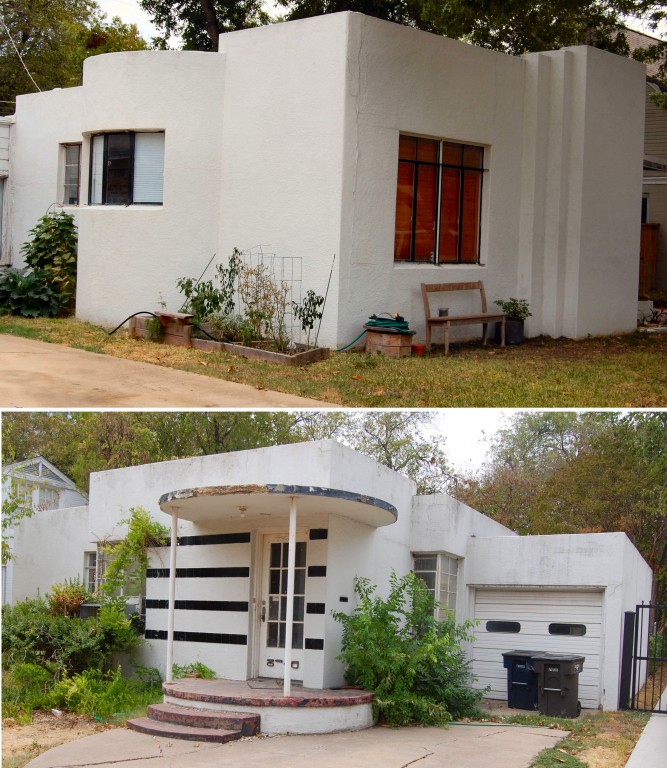
These two apart-homes (1936) face each other on Waits Avenue. But in the 1930s the unusual design of the apart-homes made them difficult to sell.
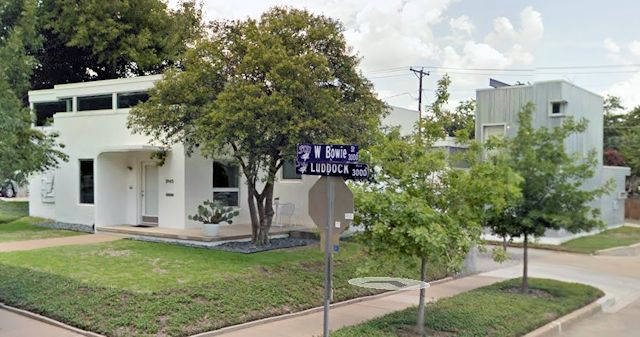
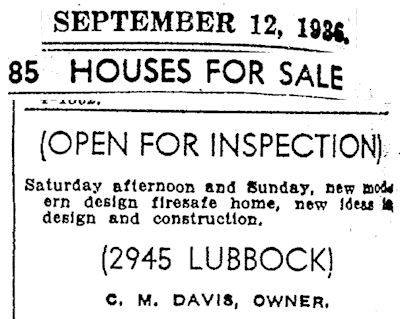 This Davis apart-home at 2945 Lubbock Avenue is larger and has been modified since Davis advertised it in 1936.
This Davis apart-home at 2945 Lubbock Avenue is larger and has been modified since Davis advertised it in 1936.
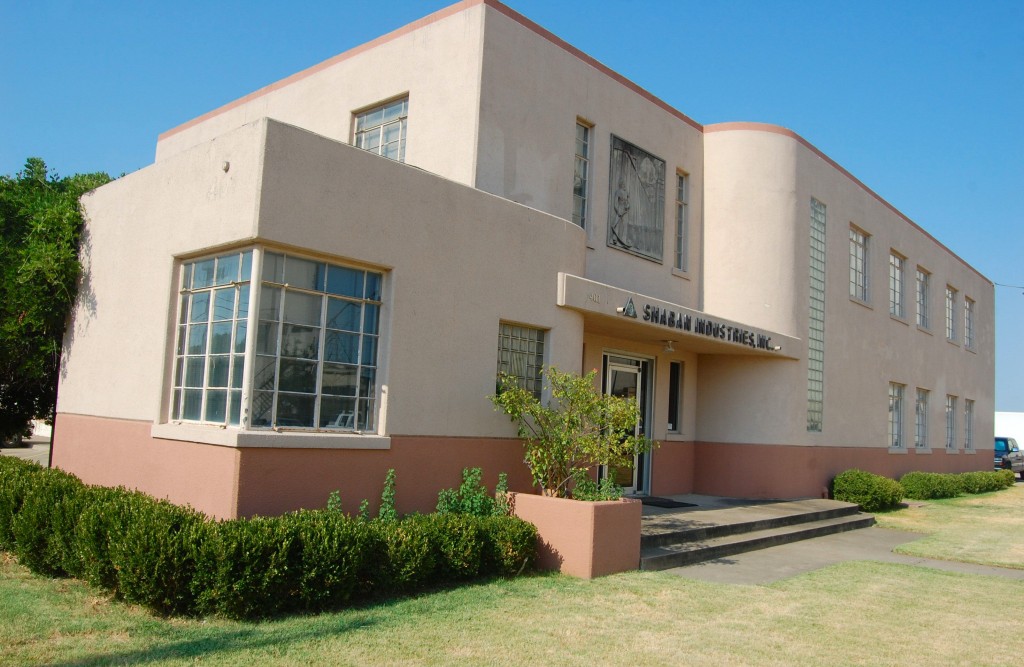
In 1940 Davis built the office building of Universal Mills grain elevator on Beach Street. (Bonus trivia: That year Universal Mills’ Gold Chain flour became the sponsor of Ernest Tubb on radio station KGKO.)
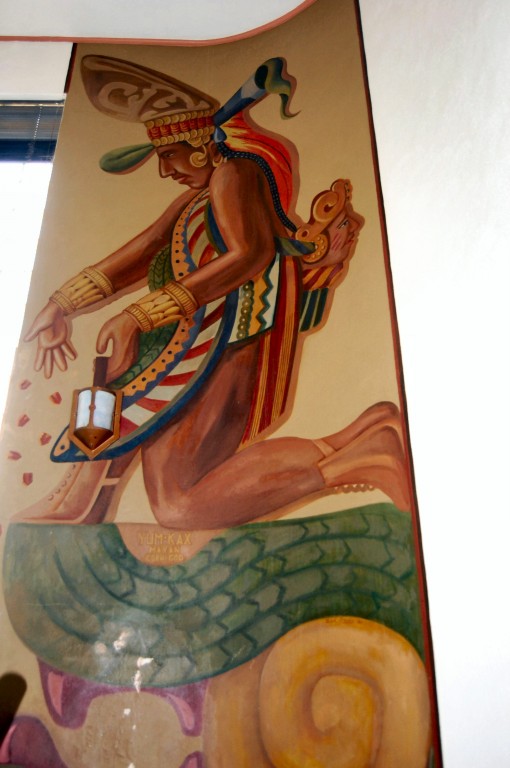
Zoe Davis painted this mural in the stairwell of the Universal Mills office building. It depicts Yum Kaax, the Mayan god of agriculture. Zoe also was a professional cartographer.
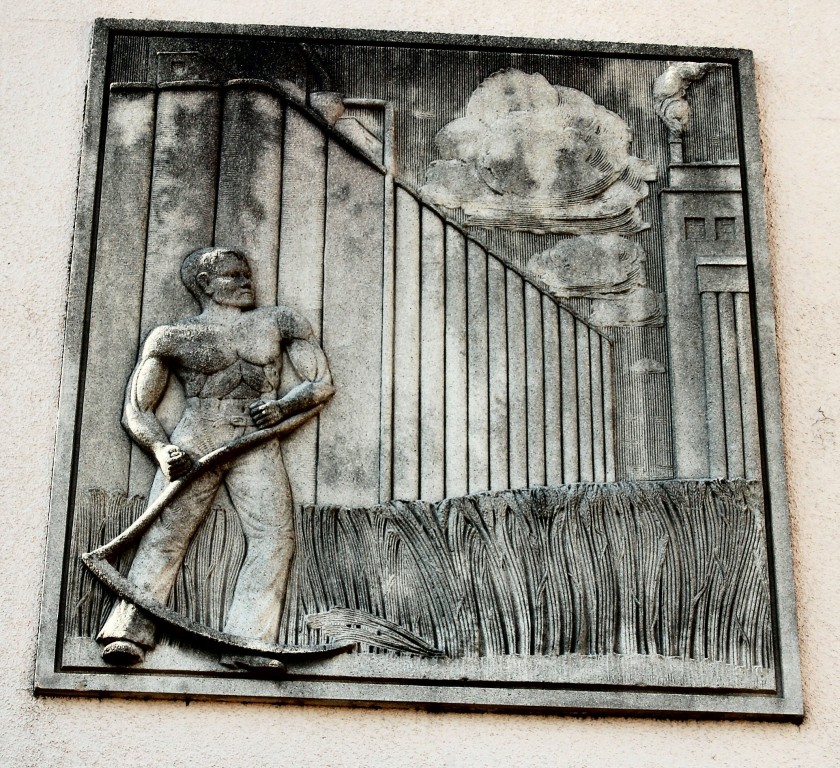
Local artist Dwight C. Holmes sculpted this relief over the entry door. It depicts a grain elevator and a man reaping wheat. (Holmes also created artwork for the main post office, Casa Manana, and Fair Park.)
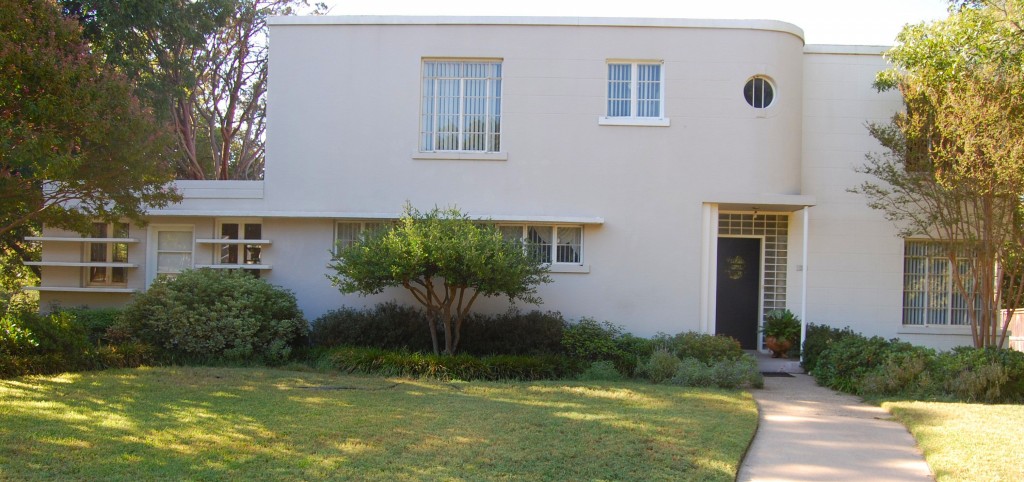
Finally, the Davises designed and built their family home in Berkeley Place on Ward Parkway (1938). It is built of concrete. Fireproof, rustproof, termiteproof. Pert near bombproof. Davis built a spiral staircase from the basement to the top deck—of concrete, of course. This style of architecture isn’t everyone’s cup of cement, but I think it’s interesting to be able to see, years later, so much of two people’s fingerprints on Fort Worth.
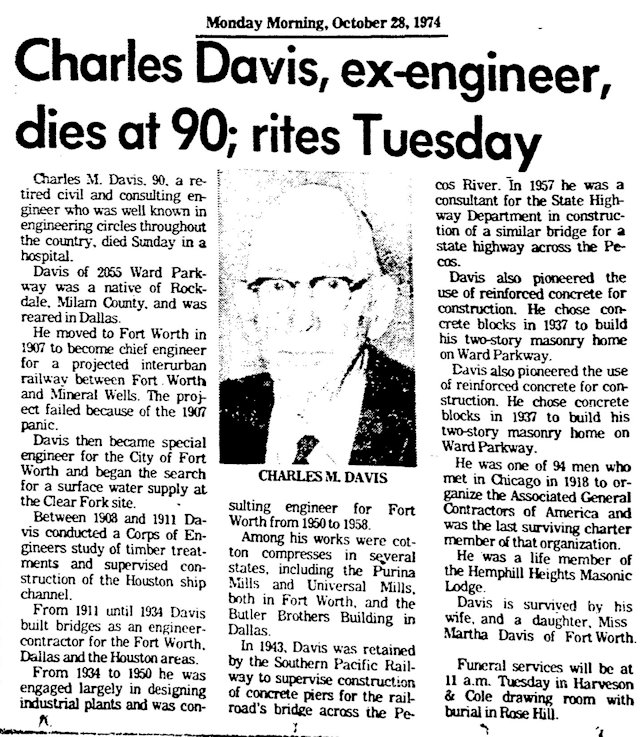
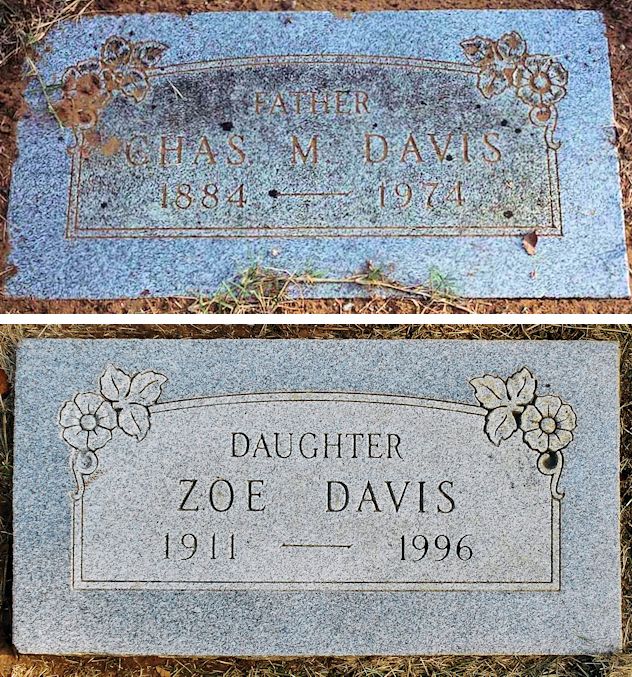 Charles Moss Davis died on October 27, 1974. He and daughter Martha Zoe are buried in Rose Hill Cemetery. The man who built to last using concrete is memorialized by a block of marble.
Charles Moss Davis died on October 27, 1974. He and daughter Martha Zoe are buried in Rose Hill Cemetery. The man who built to last using concrete is memorialized by a block of marble.






Thank you, for documenting and writing the article on my ancestor Charles Moss Davis and his daughter Martha Zoe Davis.
In 1933, Zoe presented a painting of her great uncle Jeremiah Nabours, to her cousin Homer Nabours. Jeremiah was the County and District Clerk of Milam County, Texas. At one time the painting could be seen in the Milam County, Texas County Clerk Office.
Your ancestors made a last contribution to Fort Worth.
I drive by the building by the mill on Beach every day and have wondered about those murals and reliefs. I wondered if you had ever done a blog on them, and, what do you know, here it is! Thank you.
Thank you, Linda. You really have to be paying attention to see that relief from the street.
Hello!
I enjoyed this article. I’m interested in finding out more information about Charles Moss Davis’s daughter, Zoe. I’m writing a biographical sketch of her for an art collection that contains one of her paintings. Do you by chance have any information on her-photos, obituary, etc.?
Thanks, Suzanne Labry
Suzanne, I have no further information on her. I have e-mailed you her obituary.
When I served on the City’s Landmark Designation Committee, we tried to get all of the property owners to allow us to write designation nominations for all of the apart-homes, the house on College and the house on Ward Parkway. The only one that was eventually designated as a City of Fort Worth Historic and Cultural Landmark was one of the two on Waits. As far as I know the ones covered here were the only houses Davis built.
I love his houses. Great contrast between the College Avenue and Ward Parkway houses. Today I figured out that Davis also owned-and probably built-the house next door at 3146 College Avenue (c. 1922). The Devitt house technically is on the rear of the 3146 lot. Surely that decorative concrete wall along the side of the 3146 house is Davis’s handiwork-one of his small jobs.
I wonder if any of your examples appear in this book: “DFW Deco” by Jim Parsons & David Bush
https://www.amazon.com/dp/0875656358/?coliid=I10P0WIXNVXDS1&colid=2QETXY0KJE7TY&psc=0
I was aware of Cowtown Moderne: Art Deco Architecture of Fort Worth, Texas by Judith Singer Cohen but not the Parsons-Bush book. Will look for a (relatively) inexpensive used copy. Thanks.
Thank you so much for such an informative article on the work and talents of Charles Moss Davis ( & his daughter ( Martha Zoe Davis ); son of Floyd Davis and Amanda F. Moss, he was my first cousin twice removed. I will certainly include this in my Moss family tree.
Thank you for such an important look at the history
of Davis’ work. I’m new to Ft. Worth and recently
purchased home in Mistletoe Heights. It appears to
be close to or actually be a Charles/Zoe Davis home.
Any direction you could give me regarding how to
verify would be very helpful. Kindest regards.
Thank you, Rose. The Davis house on Ward Parkway is the only one I know of in that area. There may be more. I photographed every Davis structure I could find. Historic Fort Worth might be able to help. It has a database of properties searchable by architect (not a free service).
Such an informative post. I found your blog after looking for “streamline moderne” on google images. What a gem of a post! My family recently moved into a streamline moderne home in Sacramento, CA and at first, I thought you’re blog’s reference to “Cowtown” was Sacramento. Great to see these gems being preserved (digitally and in reality) all across the US and abroad! I especially liked the home with the nearly entirely circular overhang-so unique! And the Mayan mural is incredible!
Thanks, Tim. The Davises left us with some great buildings.
Another great one, Mike. My passion, at least one of them, is architecture. All of us despot dictator types believe we are great designers. But I think I have seen these or similar houses around town. Halloween is Saturday. Are these places haunted?
Thanks, Earl. The Davises did good work.
I just finished reading another post. Love it! I don’t live there, but I enjoy the posts. I’ve wanted to do something similar in my hometown, with a focus on business developments come and gone or on people’s passions.I would love to meet you next time my family is up there. Anyhow, thanks for putting your passion into paper and pictures.
I enjoying seeing these homes. I’m going to drive around and see if I can find them. Thank you so much for posting and sharing these lovely homes. I love my Fort Worth and all it’s history!!
Thank you, Cecilia. The Davises built them all close to their own brick home on College Avenue.
Fascinating essay. Thanks for this one.
Thanks, Gus.